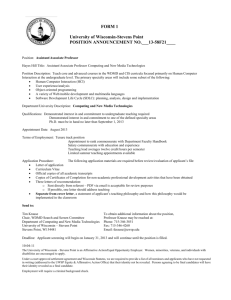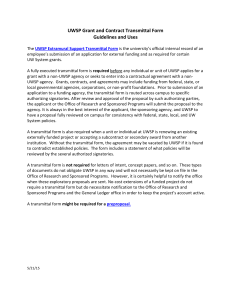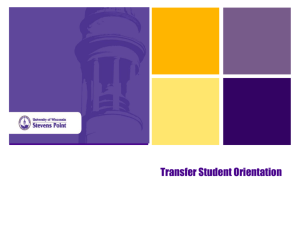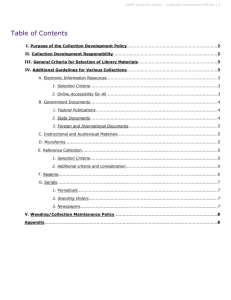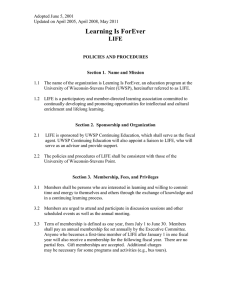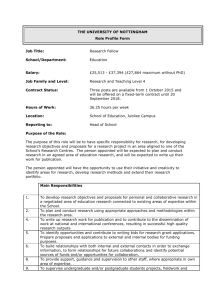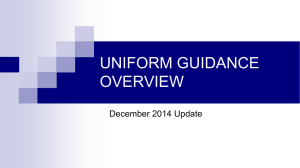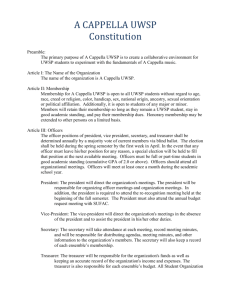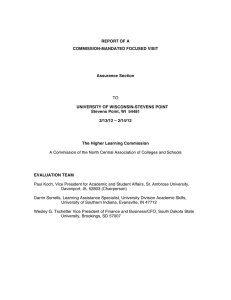Is there information about collaborative proposals?
advertisement
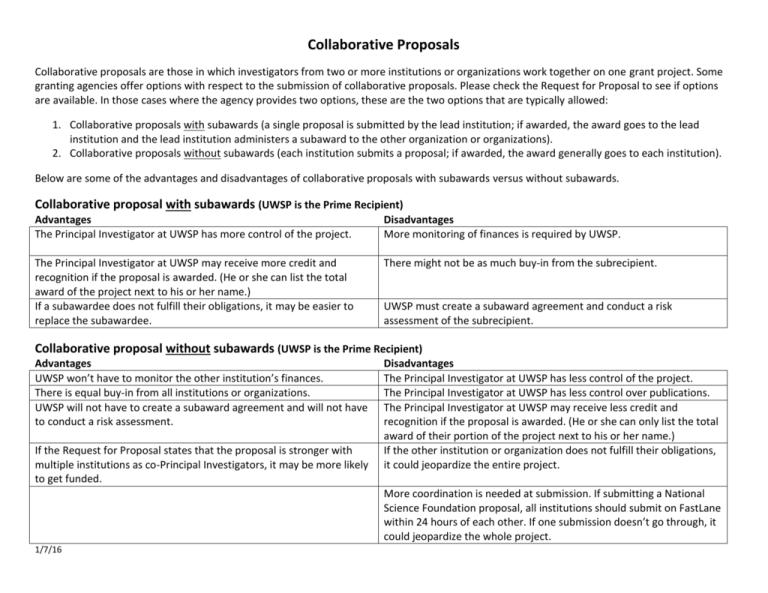
Collaborative Proposals Collaborative proposals are those in which investigators from two or more institutions or organizations work together on one grant project. Some granting agencies offer options with respect to the submission of collaborative proposals. Please check the Request for Proposal to see if options are available. In those cases where the agency provides two options, these are the two options that are typically allowed: 1. Collaborative proposals with subawards (a single proposal is submitted by the lead institution; if awarded, the award goes to the lead institution and the lead institution administers a subaward to the other organization or organizations). 2. Collaborative proposals without subawards (each institution submits a proposal; if awarded, the award generally goes to each institution). Below are some of the advantages and disadvantages of collaborative proposals with subawards versus without subawards. Collaborative proposal with subawards (UWSP is the Prime Recipient) Advantages The Principal Investigator at UWSP has more control of the project. Disadvantages More monitoring of finances is required by UWSP. The Principal Investigator at UWSP may receive more credit and recognition if the proposal is awarded. (He or she can list the total award of the project next to his or her name.) If a subawardee does not fulfill their obligations, it may be easier to replace the subawardee. There might not be as much buy-in from the subrecipient. UWSP must create a subaward agreement and conduct a risk assessment of the subrecipient. Collaborative proposal without subawards (UWSP is the Prime Recipient) Advantages UWSP won’t have to monitor the other institution’s finances. There is equal buy-in from all institutions or organizations. UWSP will not have to create a subaward agreement and will not have to conduct a risk assessment. If the Request for Proposal states that the proposal is stronger with multiple institutions as co-Principal Investigators, it may be more likely to get funded. Disadvantages The Principal Investigator at UWSP has less control of the project. The Principal Investigator at UWSP has less control over publications. The Principal Investigator at UWSP may receive less credit and recognition if the proposal is awarded. (He or she can only list the total award of their portion of the project next to his or her name.) If the other institution or organization does not fulfill their obligations, it could jeopardize the entire project. More coordination is needed at submission. If submitting a National Science Foundation proposal, all institutions should submit on FastLane within 24 hours of each other. If one submission doesn’t go through, it could jeopardize the whole project. 1/7/16
